While humanity looks to Mars as the next goal for human exploration, many in the space community believe revisiting and creating a long-term presence at the Moon is the next crucial step to get there.
By studying the Moon up close, humanity will learn more about the origin and history of the Earth, the Moon and our solar system while developing the technologies, capabilities, and business approaches needed for the future.
Goals of the next generation of Moon exploration include extending commercial and international partnerships while inspiring a new generation to reach beyond our home planet.
In addition to providing experience in living off-planet, the Moon is rich in resources that can support a human outpost. The abundant water ice discovered by NASA's Lunar CRater Observation and Sensing Satellite (LCROSS) mission can be split into oxygen and hydrogen to power fuel cells and make liquid rocket fuel. To get to Mars or anywhere else, transporting these resources from the surface of Earth is prohibitively expensive. Launching these missions from the Moon with one-sixth the gravity of Earth would be much more efficient.
Six countries and seven missions are targeting the Moon in just the next year. Notably, NASA is scheduled to fly its first uncrewed test flight in its Artemis program in late 2022, launching its massive SLS rocket carrying the Orion spacecraft as well as 10 CubeSats deployed as secondary payloads. Fifty years after the last Apollo mission to the Moon, Artemis represents the next generation of exploration, with plans to place a Gateway space station in lunar orbit to support a permanent Moon base. What the space community will learn at the Moon will help humanity send the first astronauts to Mars.
To support NASA's ability to establish a presence on the Moon and ultimately get to Mars, Southwest Research Institute is conducting a number of projects ranging from laboratory studies to zero-gravity experiments and orbital research as well as developing new lunar instruments. These include three NASA Commercial Lunar Payload Services (CLPS) projects that use American companies to deliver science and technology to the Moon's surface.
1. ENABLE Mass Spectrometer
Ed PatrickSwRI scientists are developing a new mass spectrometer to operate in the Moon's close-to-zero atmospheric pressure. The instrument will measure the chemical components present at the Moon to support in situ resource utilization (ISRU) for future lunar missions. Being able to "live off the land" — capturing and processing local lunar resources for rocket fuel, breathable air, engineered materials and structural components — could support a permanent human presence on the Moon and serve as a springboard for missions to Mars and beyond.
While lunar missions have found increasingly unambiguous evidence for water and other volatiles trapped beneath the lunar subsurface, Apollo and laboratory investigations have also shown that spacecraft, equipment and astronauts can locally overwhelm the lunar extreme high vacuum (XHV) environment. Equipment for prospecting and processing lunar resources could mask the native lunar background chemical signal as well as those signals arising when volatiles trapped within the lunar subsurface are disturbed. For these reasons, analytical chemistry by mass spectrometry will be essential for analyzing the native lunar background, probing for volatiles known to be present and monitoring the impact of spacecraft, equipment and processes soon to be deployed by the coming armada of international spacecraft.
Anticipating the needed instrumentation capabilities for this coming global renaissance in lunar exploration, NASA implemented the Development and Advancement of Lunar Instrumentation Program (DALI). The DALI program has funded the development of the Environmental Analysis of the Bounded Lunar Exosphere (ENABLE) project. SwRI is adapting a commercial off-the-shelf quadrupole mass spectrometer (QMS) into a space-qualified prototype instrument that could serve aboard multiple mission platforms to monitor environmental conditions under multiple lunar mission scenarios.
The goal for the QMS prototype is to analyze atmospheres from Earth pressures to the extreme high vacuums found on the Moon, providing mass-spec composition measurements over the entire lower half of this range. This range would allow the delivered ENABLE instrument to handle unanticipated pressure spikes associated with spacecraft engine plumes and nearby surface impacts while also producing partial pressure composition measurements targeting and identifying specific volatile species. As a handheld device, astronauts could use ENABLE to detect sources of leaks in spacecraft or habitation modules arising from equipment defects or the occasional perforation caused by micrometeoroid impacts.
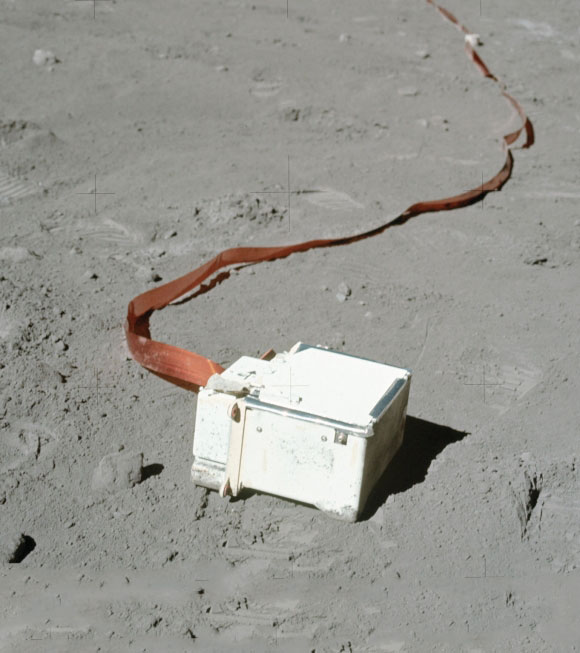
Courtesy of NASA/Schmitt/AS17-134-20499
SwRI aims to return mass spectrometry to the lunar surface for the first time in half a century to support ISRU activities. This image of the Lunar Atmospheric Composition Experiment, deployed by Apollo 17 in 1972, was photographed from the lunar surface by astronaut Harrison Schmitt.
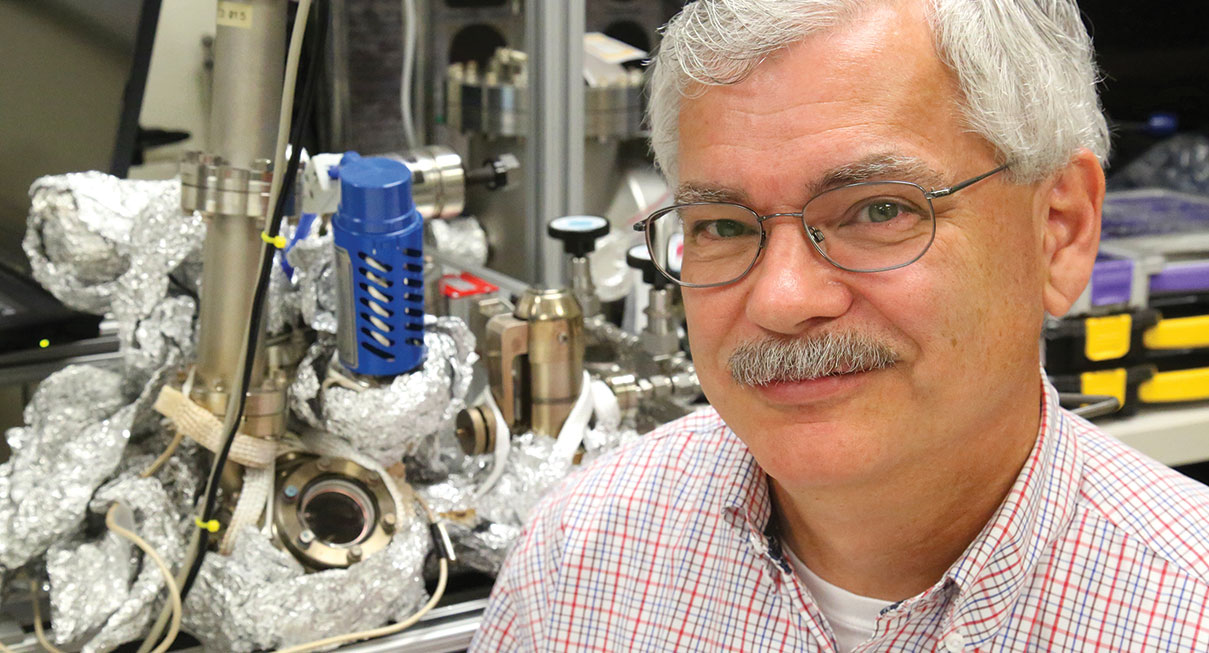
Ed Patrick, who oversees SwRI's space environment simulation lab, leads the ENABLE project, adapting a commercial off-the-shelf mass spectrometer to identify materials present on the Moon.
2. Regolith Resources
Dr. Akbar WhizinThe surface of the Moon is covered by regolith, a loose collection of dust and other detritus produced over billions of years by meteor impacts and charged particles bombarding the lunar surface rock. SwRI scientists are conducting low-gravity laboratory and flight studies to assess how regolith resources could help sustain longer-term human habitation on the Moon.
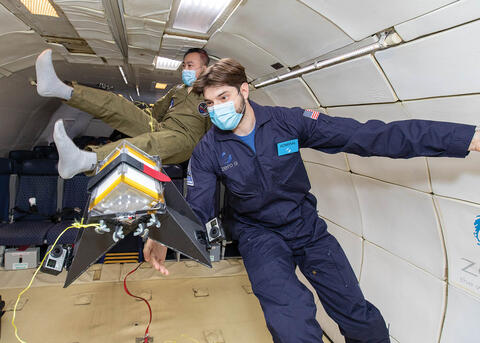
Dr. Akbar Whizin has conducted a variety of experiments in the zero-gravity portion of parabolic flights.
From aboard a 727 aircraft modified to simulate weightlessness through parabolic maneuvers, scientists studied the regolith's properties and usefulness by developing and deploying surface penetrometers for reduced-gravity applications. Penetrometer devices are forced into soil to measure its resistance to vertical penetration. The experiment used lunar gravity to test sensor performance in a relevant environment.
Other microgravity experiments include an internally funded study of bubbles and boiling in zero gravity and a NASA SSERVI-funded investigation of low-speed impacts into analog asteroid surfaces using a gasless projectile launcher within a vacuum chamber on parabolic flights.
Another project is creating a lattice of small experiment chambers within a vacuum chamber to efficiently test science and engineering concepts simultaneously. The team proposed to further develop this test chamber through NASA's Space Technology Mission Directorate, which funds transformative space technologies to enable NASA's future missions.
To support ISRU initiatives, SwRI is studying additive construction and other techniques to make "regolith bricks" to build a future lunar base. The team is exploring using magnetic induction to heat the regolith into construction materials. Because the technique uses induction instead of radiated heat to sinter the regolith, it works in a vacuum. The team is addressing some technical challenges and will propose further development through a NASA Innovative Advanced Concepts (NIAC) study.
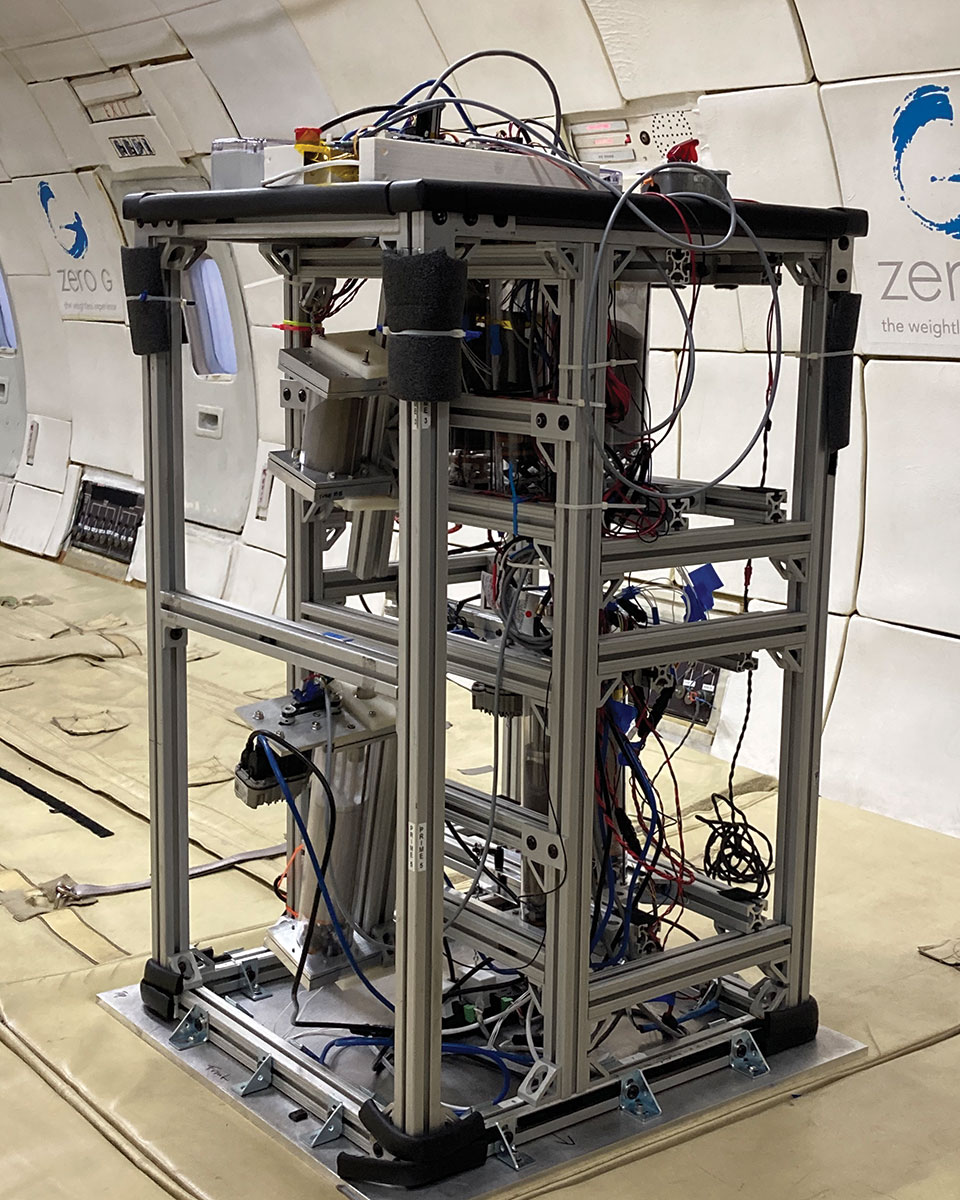
SwRI flew an experiment payload to characterize sensor-regolith interactions in microgravity aboard a parabolic flight in December 2021.
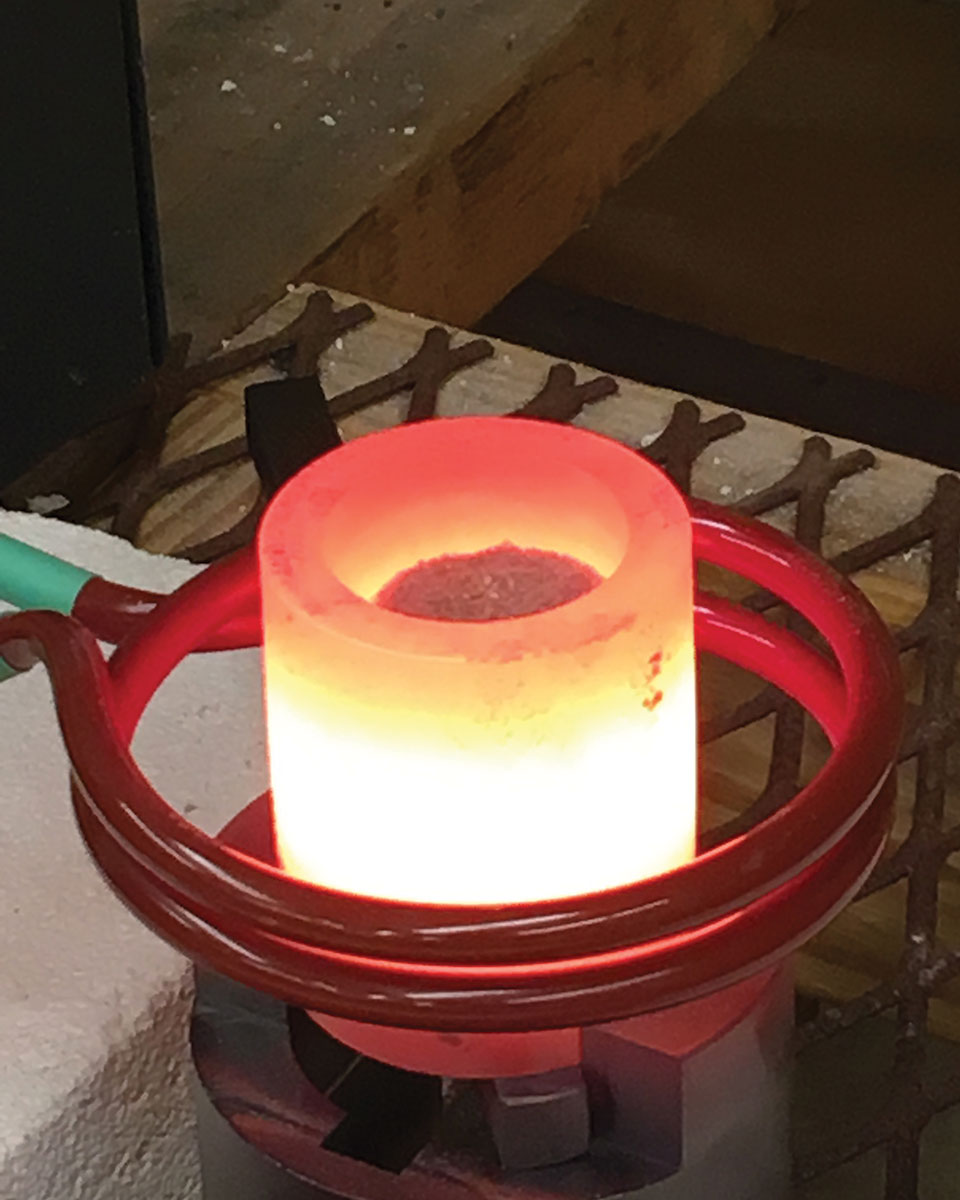
SwRI scientists used internal funding to demonstrate induction coil heating (~1,000 C) of lunar regolith simulant to investigate use as building materials.
3. Prospecting on the Moon
Dr. Philippa MolyneuxTo better understand lunar resources that can push the boundaries of human exploration, SwRI is developing the Integrating CAvity enhanced Raman Ultraviolet Spectrograph (ICARUS) instrument for a future lunar lander. It includes arm-based sensors to identify materials of interest, as well as a sample collection chamber designed to thoroughly investigate compounds. Raman spectroscopy is an incredibly powerful nondestructive optical technique that helps scientists identify and quantify molecules in liquid, solid and gas compounds on both the lunar surface and the shallow subsurface.
Raman spectroscopy uses scattered light to measure the vibrational energy of materials, providing both chemical and structural information to identify substances through their characteristic Raman "fingerprint."
ICARUS provides the ability to identify major and trace mineral and volatile phases at the lunar surface and in the shallow subsurface without sample preparation or destruction. The technique can be coupled with sample collection and/or measurements from other instruments during a landed mission.
The ICARUS instrument uses two laser light sources, covering the deep ultraviolet and visible ranges. The visible laser targets minerals. The ultraviolet laser is particularly sensitive to organic compounds, by minimizing fluorescence that can swamp the Raman scattered light. ICARUS is designed with a front-end sensor that can be deployed on a lander arm to analyze lunar material in situ. If this analysis detects materials of interest, the lander arm can scoop up a sample and deposit it into an SwRI-patented, highly reflective, integrating cavity.
The integrating cavity increases the number of laser-light interactions with the sample, maximizing the number of Raman-scattered photons to analyze materials at nanomolar detection limits. This precision may be essential for detecting volatiles such as water ice, carbon monoxide, ammonia and organics present in very low concentrations. These volatiles are particularly important for in situ resource utilization and for expanding human exploration on the Moon and eventually Mars.
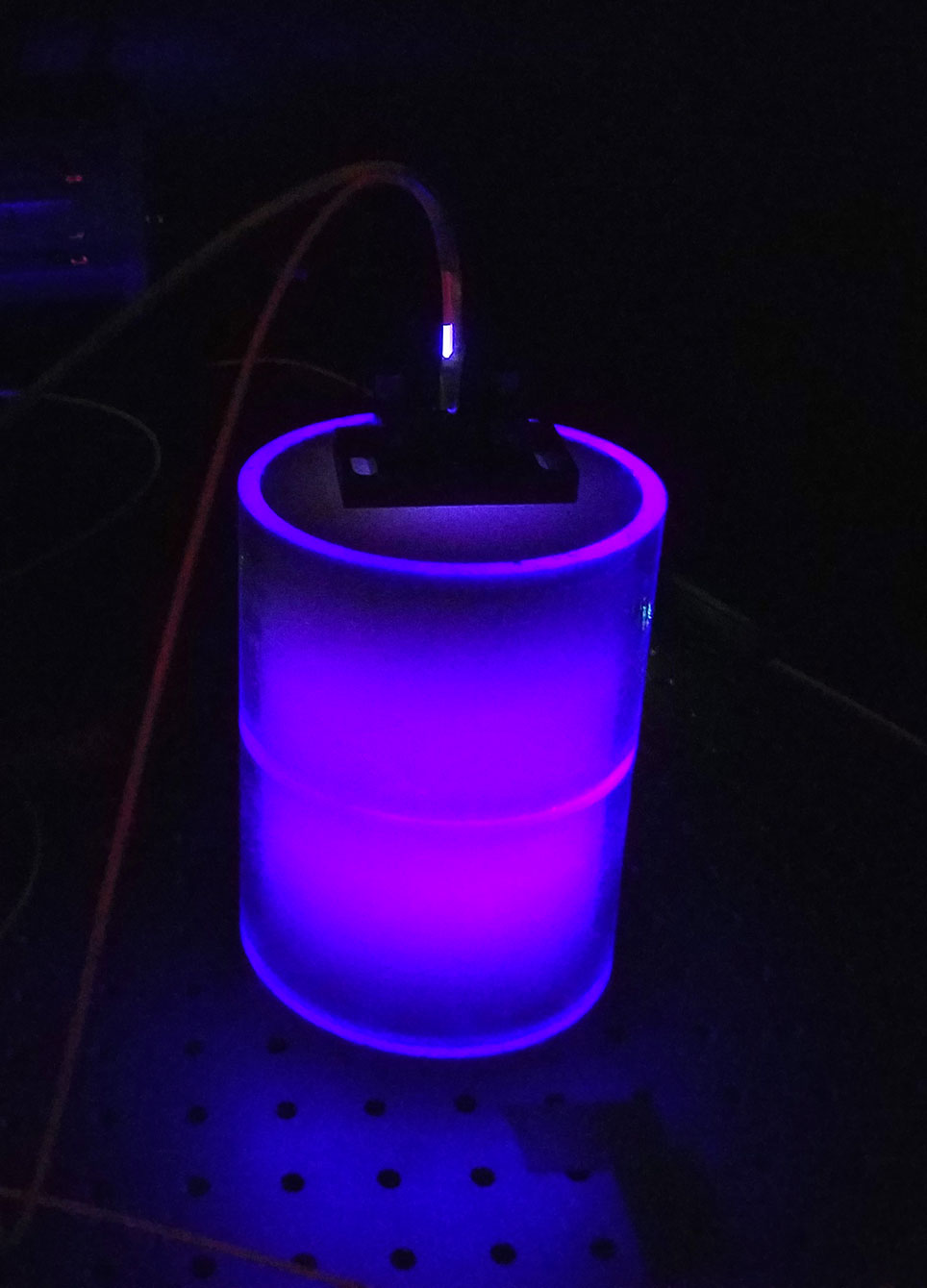
SwRI is using internal funding to develop an instrument for a future lunar lander. The Integrating CAvity enhanced Raman Ultraviolet Spectrograph or ICARUS instrument includes a sample collection chamber designed to thoroughly investigate compounds.
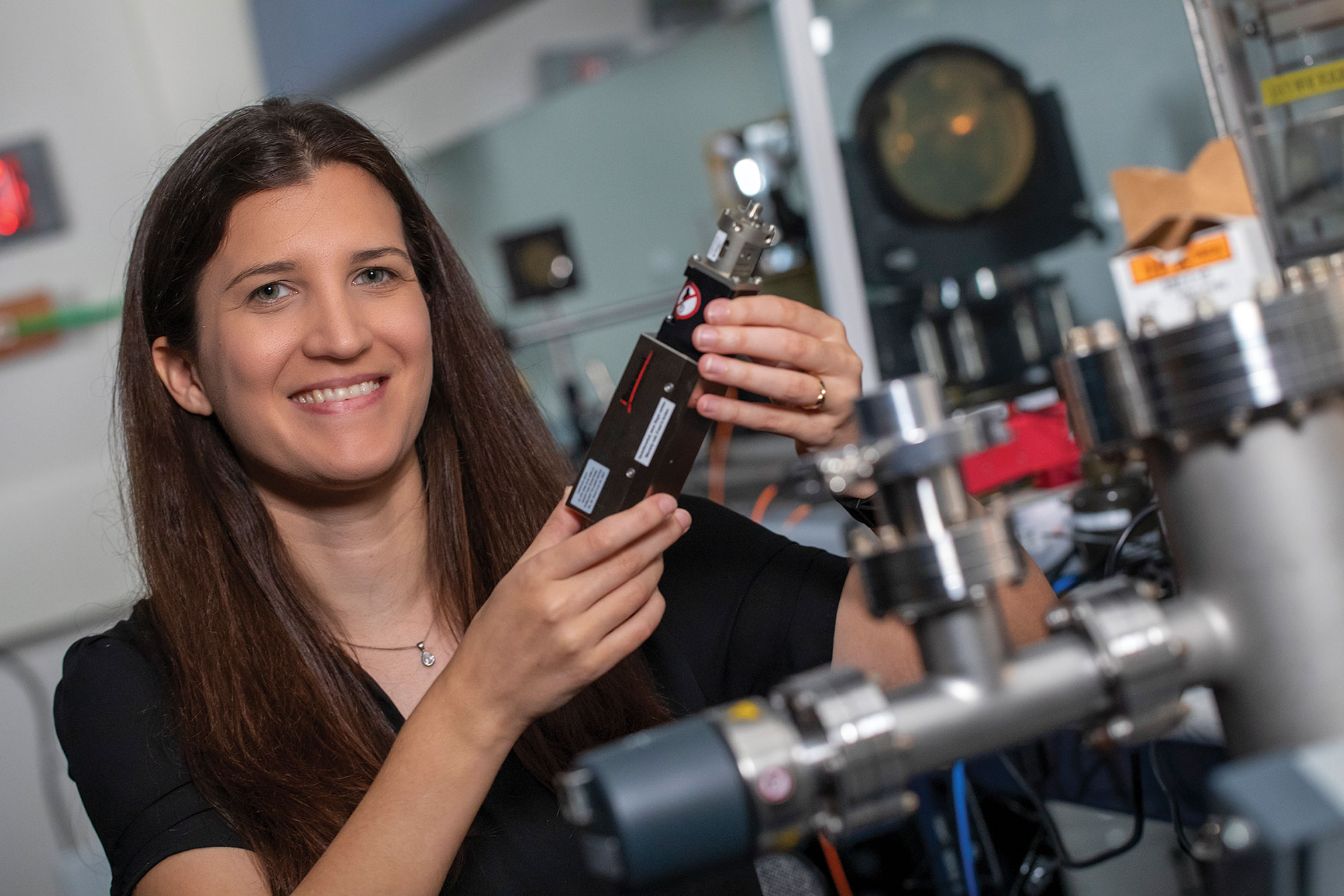
Dr. Philippa Molyneux develops and tests UV instrumentation for planetary science and heliophysics, with a particular interest in UV studies of planetary atmospheres and surfaces. She is contributing to the development of the ICARUS instrument for a future lunar lander mission.
4. VAPORR Verification
Dr. Michael Miller and Dr. Amy McCleneySwRI is developing the Volatiles Analyzer and Prospector of Regolith Resources (VAPORR) to support near-term NASA and commercial missions to the Moon as well as future missions to Mars and beyond. To prepare for a long-term lunar presence, VAPORR would characterize the lunar surface to inform how future chemical plants on the Moon could process the available resources to sustain life and synthesize materials to support habitation — a fundamental goal of ISRU. While satellites orbiting the Moon have collected remote spectroscopy data about surface materials, the instrument would collect ground-truth data about the composition of the regolith in the context of what volatile species can be extracted from the surface.
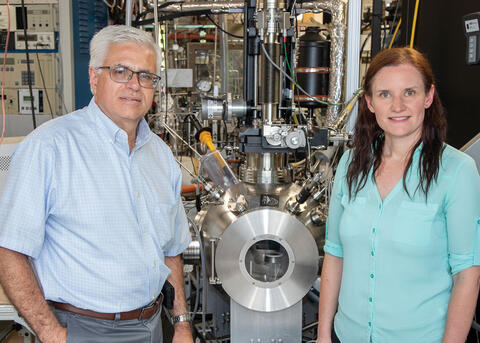
Dr. Michael Miller and Dr. Amy McCleney are integrating several systems to create an instrument to characterize the lunar surface to support habitation.
The VAPORR instrument works by inserting its spear-like probe into the lunar regolith and shining a laser below the surface to heat it. Careful control of laser power extracts volatile molecules of different chemical structures over distinct temperature ranges through thermal desorption, allowing the instrument to characterize their abundancies and potential uses. VAPORR integrates two different analysis principles in one instrument: optical emission spectroscopy (OES) and mass spectrometry to analyze the various volatile species entering the spear and assess the chemical reactions a chemical plant can use to synthesize useful products.
While the design of VAPORR is relatively straightforward, ensuring that the instrument's many integrated systems function properly in concert requires extensive testing. SwRI scaled down several pre-existing technologies and integrated them to perform as a single instrument to support either mobile rover research or stationary resource utilization efforts.
The team used computational molecular flow analyses to determine VAPORR's critical gas flow pathways and flow patterns in interaction with the lunar regolith. The challenge was modeling the erratic movements of individual molecules. Traditional computational methods would not work, so the team created new coding to understand how molecules behave, particularly in the reduced-gravity environments found on the Moon and Mars.
Using the novel molecular flow computational analysis method, SwRI analyzed how lunar regolith would behave using a 3D solid model of VAPORR and its interior pathways. These simulations assessed how well VAPORR captures gas emitted from moondust, serving as a benchmark for future probe design tradeoff studies. SwRI has been actively pursuing external funding to advance the state of development of VAPORR through NASA's DALI program and commercial opportunities.
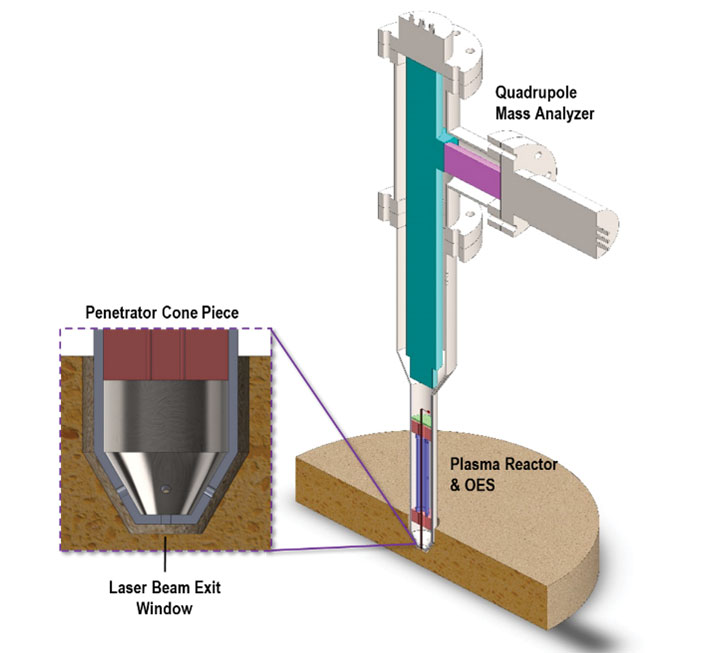
SwRI developed new molecular flow analyses to demonstrate that VAPORR can successfully collect volatiles from the lunar regolith into the device for further analysis.
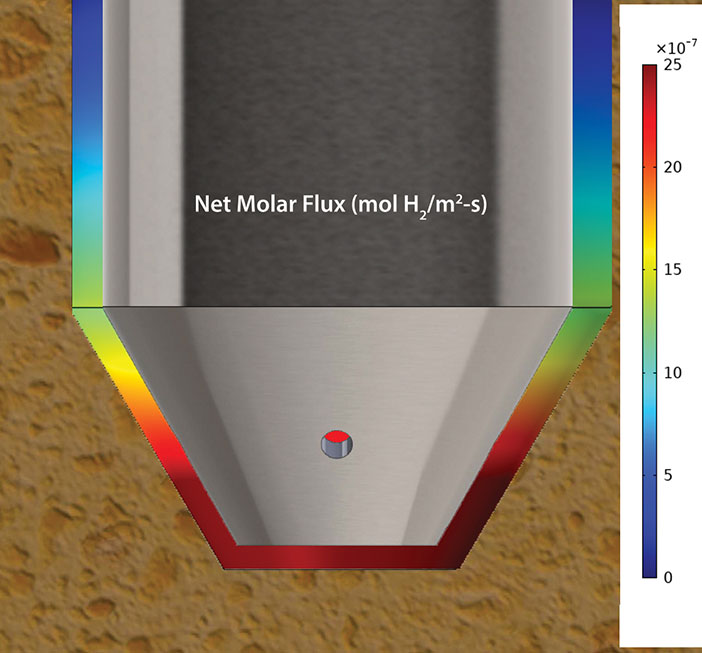
5. Nearside Sounder
Dr. Robert GrimmThrough NASA's Commercial Lunar Payload Services (CLPS) program, SwRI is developing the Lunar Magnetotelluric Sounder (LMS) to determine the electrical conductivity of the interior of the Moon by measuring low-frequency electric and magnetic fields. For more than 50 years, scientists have used the magnetotelluric technique, which uses natural time variations of the Earth's electromagnetic fields to determine the electrical conductivity of the subsurface for research and resource exploration. LMS will be the first extraterrestrial application of magnetotellurics.
DETAIL
The large dark spots visible to the naked eye on the Moon's surface were dubbed lunar maria, Latin for "seas," by early astronomers who mistook them for actual seas.
Electromagnetic fields penetrate to greater depths with decreasing frequency, probing the interior of the Moon to depths up to 700 miles or two-thirds of the lunar radius. The electrical conductivity depends on the temperature and composition of the materials traveling through the field. The measurements will shed light on the differentiation and thermal history of our Moon, a cornerstone to understanding the evolution of solid worlds.
LMS is a payload on a CLPS lander mission, scheduled to land in Mare Crisium in early 2024. Firefly Aerospace of Austin, Texas, is providing the lander. Mare Crisium is an ancient, 350-mile-diameter impact basin that subsequently filled with lava. It is a dark circular spot to the northeast that stands apart from the large, connected areas of dark lava to the west where most of the Apollo missions landed. These vast, linked lava plains are now thought to be compositionally and structurally anomalous with respect to the rest of the Moon. From this separate vantage point, Mare Crisium may provide the first geophysical measurements representative of most of the Moon.
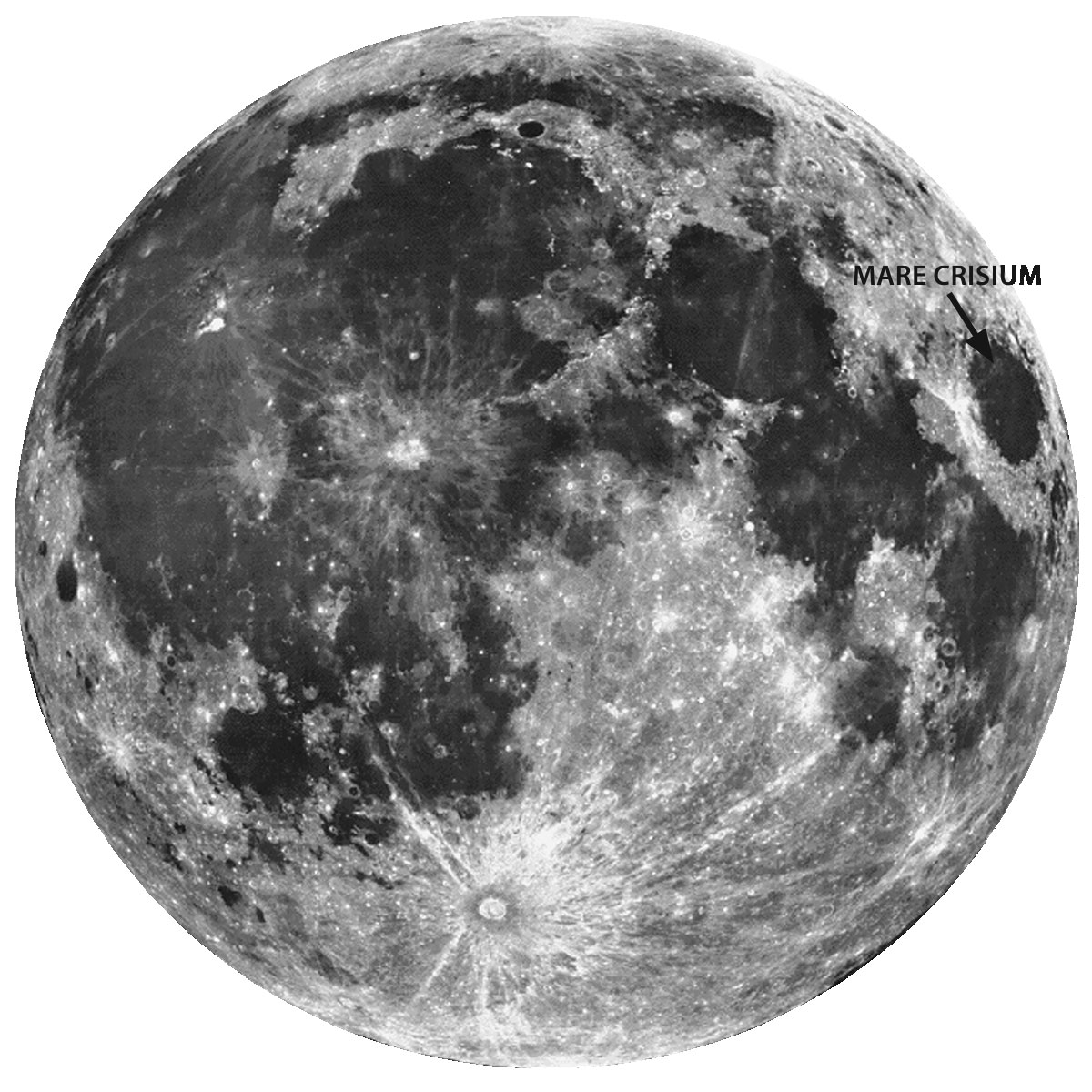
Courtesy of Lick Observatory
The large dark spots visible to the naked eye on the Moon's surface were dubbed lunar maria, Latin for "seas," by early astronomers who mistook them for actual seas.
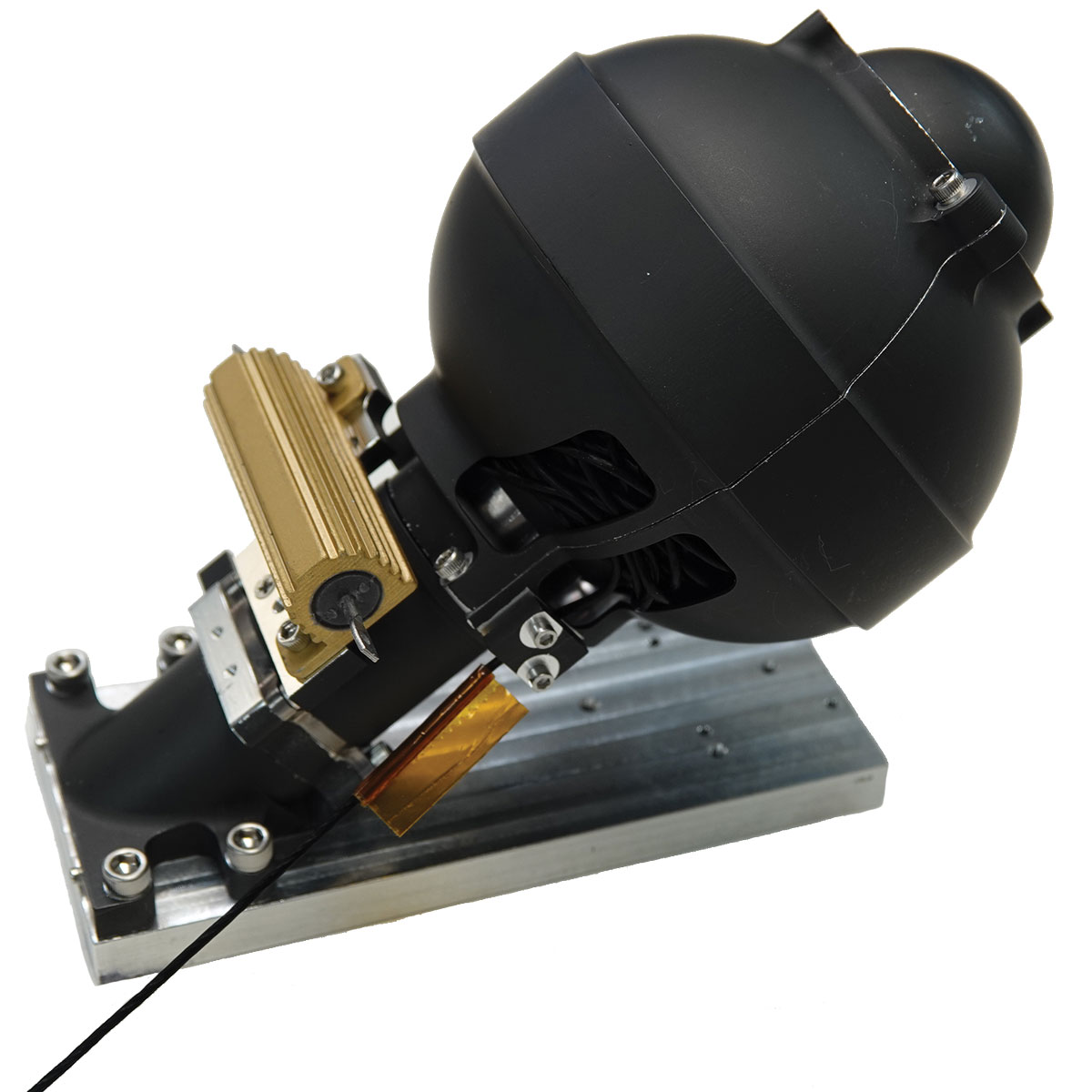
Courtesy of Heliospace
SwRI is leading a team to develop the LMS instrument for the Mare Crisium lander mission, which includes four spring-launched electrodes (one shown above), a magnetometer (below right), and a central electronics box (below left).
Texas Tech University's Lunar Instrumentation for Thermal Exploration with Rapidity (LISTER) — another geophysical instrument selected along with LMS — determines lunar heat flow using a pneumatic drill to measure temperatures up to 10 feet into the subsurface. Because heat flow and electromagnetics are complementary, combining data from the instruments will improve temperature and composition profiles. When the SwRI and Texas Tech teams discovered that both instruments had been selected, they immediately requested that the instruments fly on the same mission and successfully advocated for a geophysically relevant landing site.
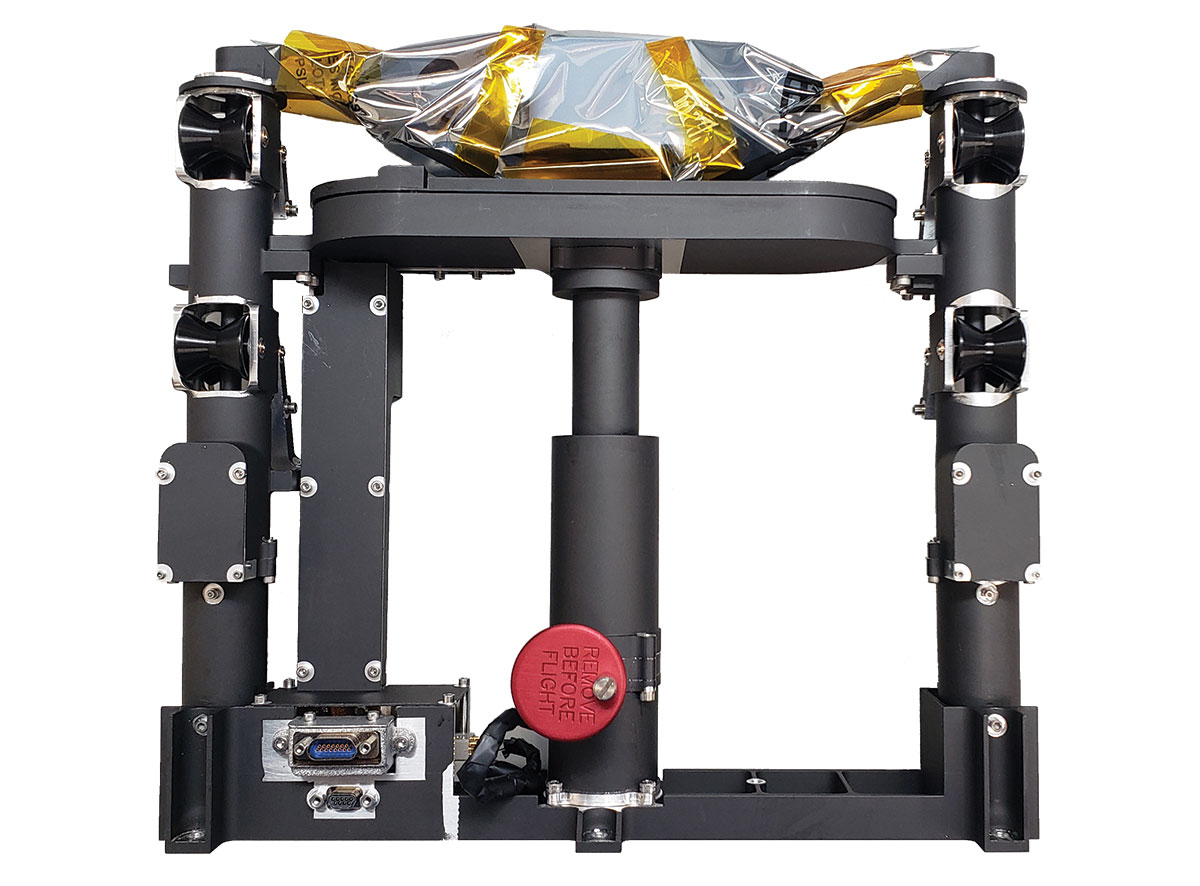
Courtesy of Goddard/Heliospace
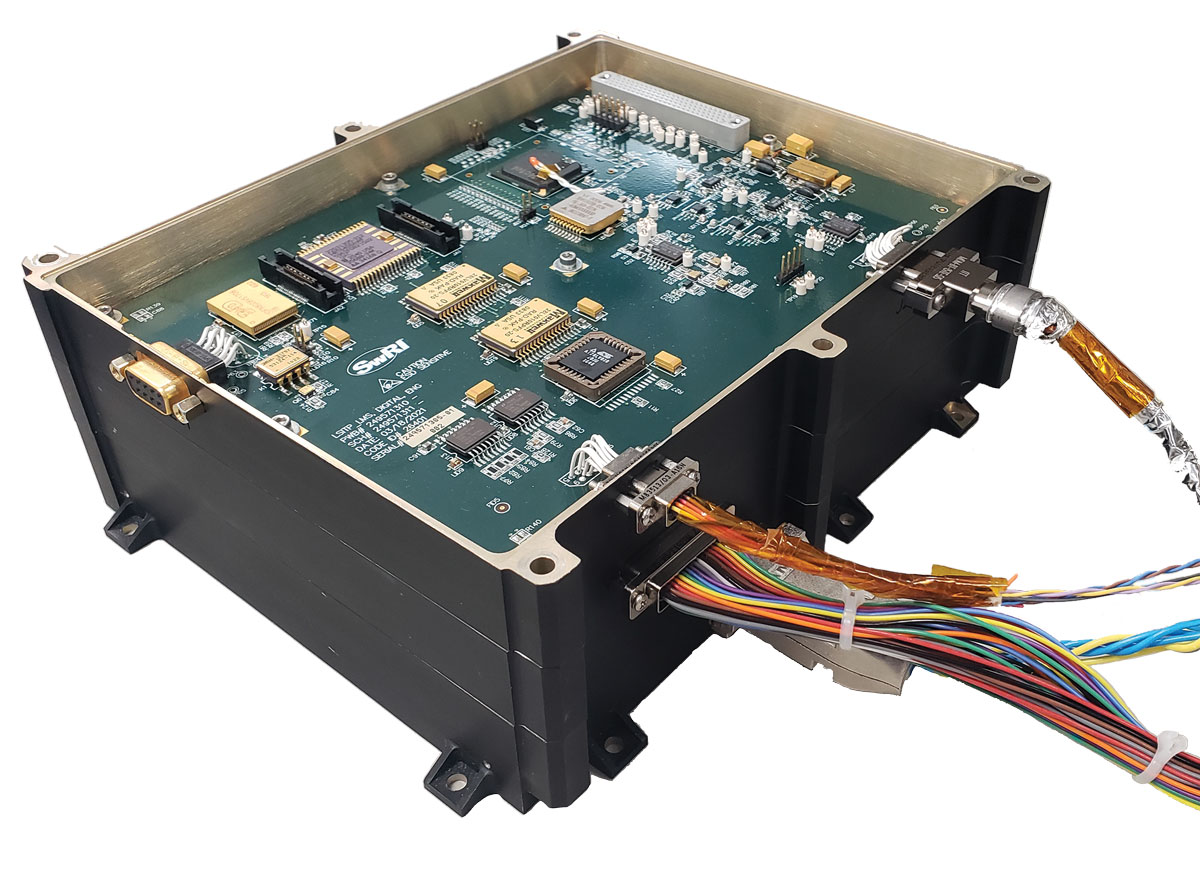
6. Far Side Foray
Dr. Robert GrimmWhen another round of CLPS payload opportunities was announced, LMS and LISTER teamed up from the start to respond. This time, the call was for instrument suites to go to Schrödinger Basin on the far side of the Moon, a first for NASA. The SwRI-led Lunar Interior Temperature and Materials Suite (LITMS) will study the thermal evolution, differentiation and asymmetry of Earth's closest neighbor.
The lander payload also includes the Jet Propulsion Laboratory's Farside Seismic Suite (FSS). The combination of seismology, electromagnetics, and heat flow provides a near-ideal geophysical package that could be a model for a future Lunar Geophysical Network.
The 200-mile-diameter Schrödinger Basin has an inner ring characteristic of craters this size. LITMS was able to negotiate a landing site outside of this ring, where the crust is thicker and likely more representative of the majority of the Moon. A third instrument suite, the Lunar Surface Electromagnetic Explorer (LuSEE) led by the University of California, Berkeley, will also fly on the Schrödinger mission and will cooperate closely with the SwRI-led suite. LITMS will use data from LuSEE's magnetometers, which provide greater bandwidth than the original LMS implementation. This mission is slated to launch in early 2025. The Draper Laboratory of Cambridge, Massachusetts, will provide the lander.
The hardware teams include SwRI (electronics), Heliospace Corp. (electrometer), Goddard Space Flight Center (magnetometer) and Honeybee Robotics (LISTER). Science teams span several institutions in the U.S. and the United Kingdom. Although CLPS instruments are low-cost, LMS and LITMS aim to make fundamental contributions to our understanding of the Moon.
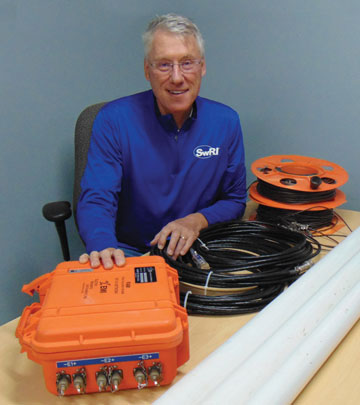
Bob Grimm shows part of a conventional magnetotelluric system used for subsurface sounding on Earth.
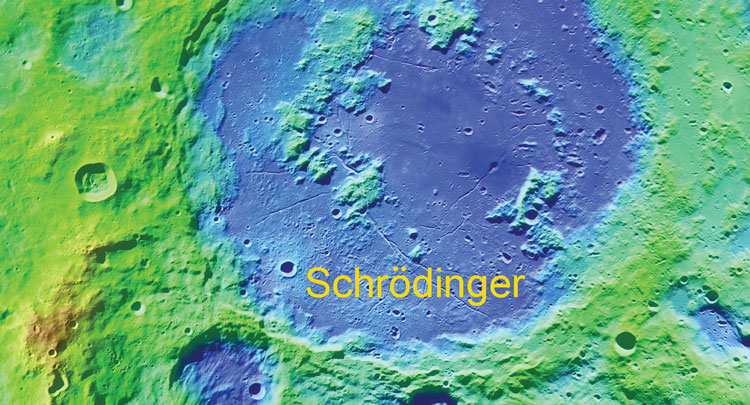
Courtesy of NASA/LPI/USRA
The Lunar Interior Temperature and Materials Suite (LITMS) will land on the far side of the Moon — a NASA first — in Schrödinger basin to study the thermal evolution, differentiation and asymmetry of Earth's closest neighbor. In this topographic image, the elevation difference between blue (low) and brown (high) is over 30,000 ft. The landing site is in the upper-right portion of the basin.
7. Magnetic Mystery Mapping
Dr. Jörg-Micha Jahn
SwRI scientists are developing a plasma spectrometer to study magnetic mysteries on the Moon's surface as part of NASA's Lunar Vertex lander-rover mission.
The SwRI-developed Magnetic Anomaly Particle Spectrometer (MAPS) will study the interaction of the solar wind with surface materials on the Moon, aiming to understand the origin of swirling patterns of bright and dark soil that coincide with localized swaths of magnetic fields.

SwRI's Dr. Jörg-Micha Jahn is developing a lander instrument to study the influx of solar wind and how it interacts with localized lunar magnetic fields.
MAPS will remain on the Lunar Vertex lander to investigate how the influx of the solar wind interacts with the Moon's localized magnetic fields and how it could affect features on the lunar surface. The spectrometer will help determine how many charged particles delivered by the solar wind even make it to the surface of the Moon.
Unlike the Earth, the Moon does not have a global magnetic field that protects it from the supersonic solar wind. As these streams of energetic particles hit the lunar surface, magnetic patches bend the trajectories of the solar particles, acting like an umbrella. The Johns Hopkins University Applied Physics Laboratory (JHUAPL) is leading this investigation to Reiner Gamma, one of the most prominent local pockets of magnetized crust, to understand conditions on the Moon and other airless worlds throughout the solar system.
MAPS will gather sensitive, high-resolution insights not possible with spacecraft orbiting around the Moon. It offers more than four times higher resolution than instruments typically orbiting around Earth or the Moon, yet it weighs only eleven pounds (five kilograms) and draws less than eleven watts of power. Just as a spectrometer separates light into its constituent wavelengths, a particle spectrometer separates particles according to their energy and direction of travel. This three-dimensional "picture" of the charged particles reveals how the solar wind has been altered by the magnetic fields at Reiner Gamma.
MAPS will help scientists understand space weathering, the continuous surface erosion of objects ranging from rocky planets to moons, asteroids and comets. The space weathering process is the combined accumulation of micrometeor impacts, energetic radiation and the constant stream of particles from the solar wind. The Lunar Vertex mission is funded through NASA's CLPS initiative.
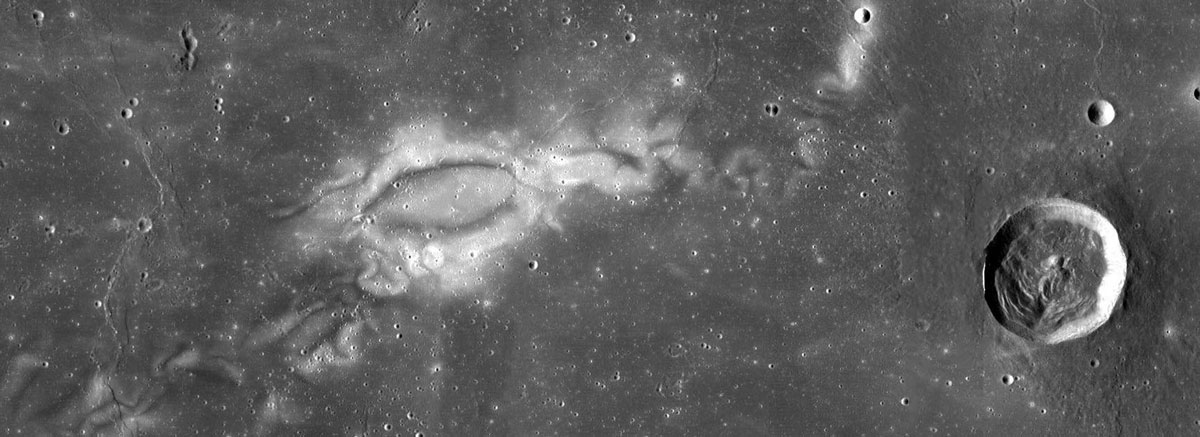
Courtesy of NASA
The SwRI-led MAPS instruments will study mysterious swirls on the Moon's surface thought to be associated with localized lunar magnetic fields.

